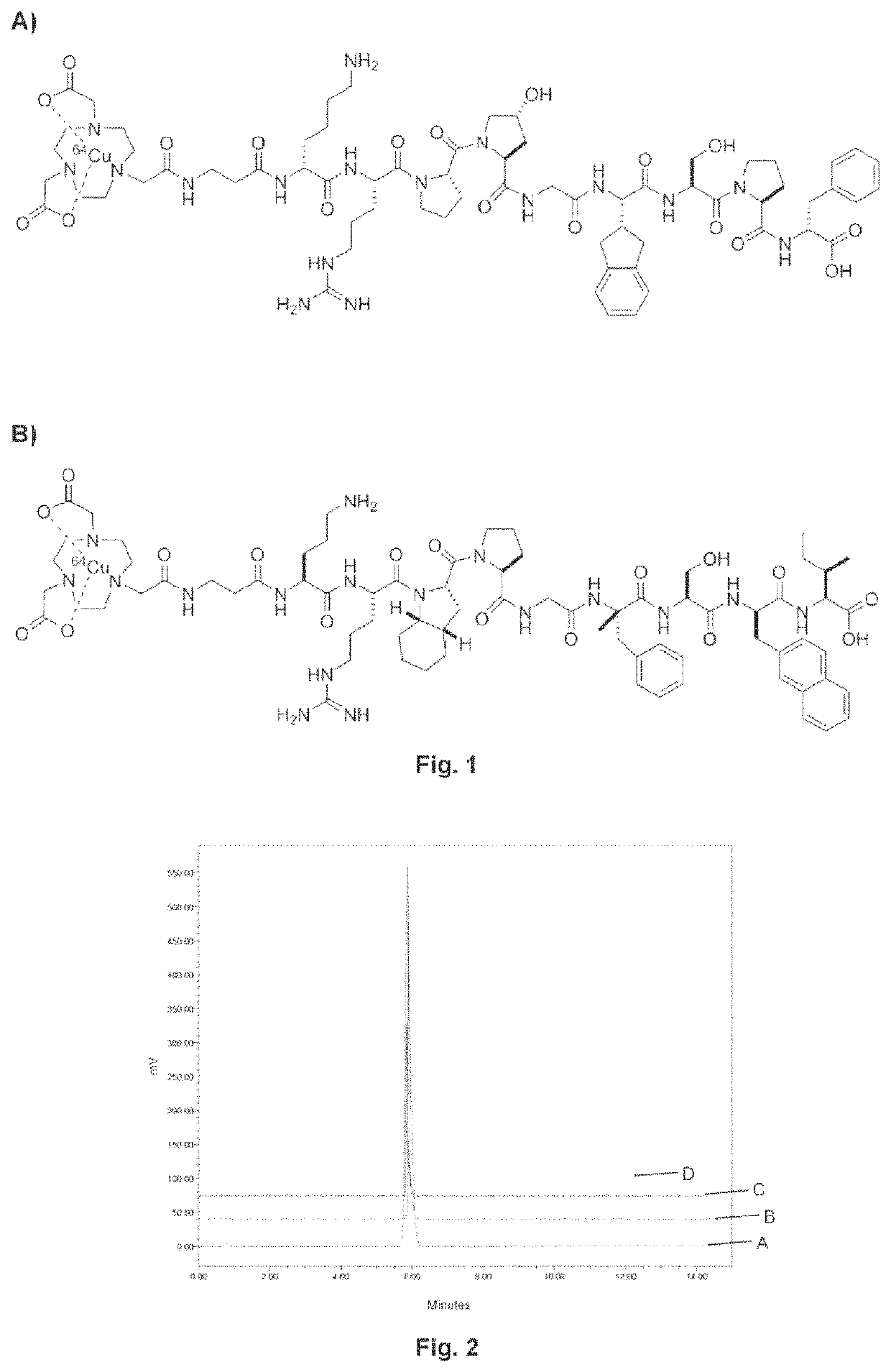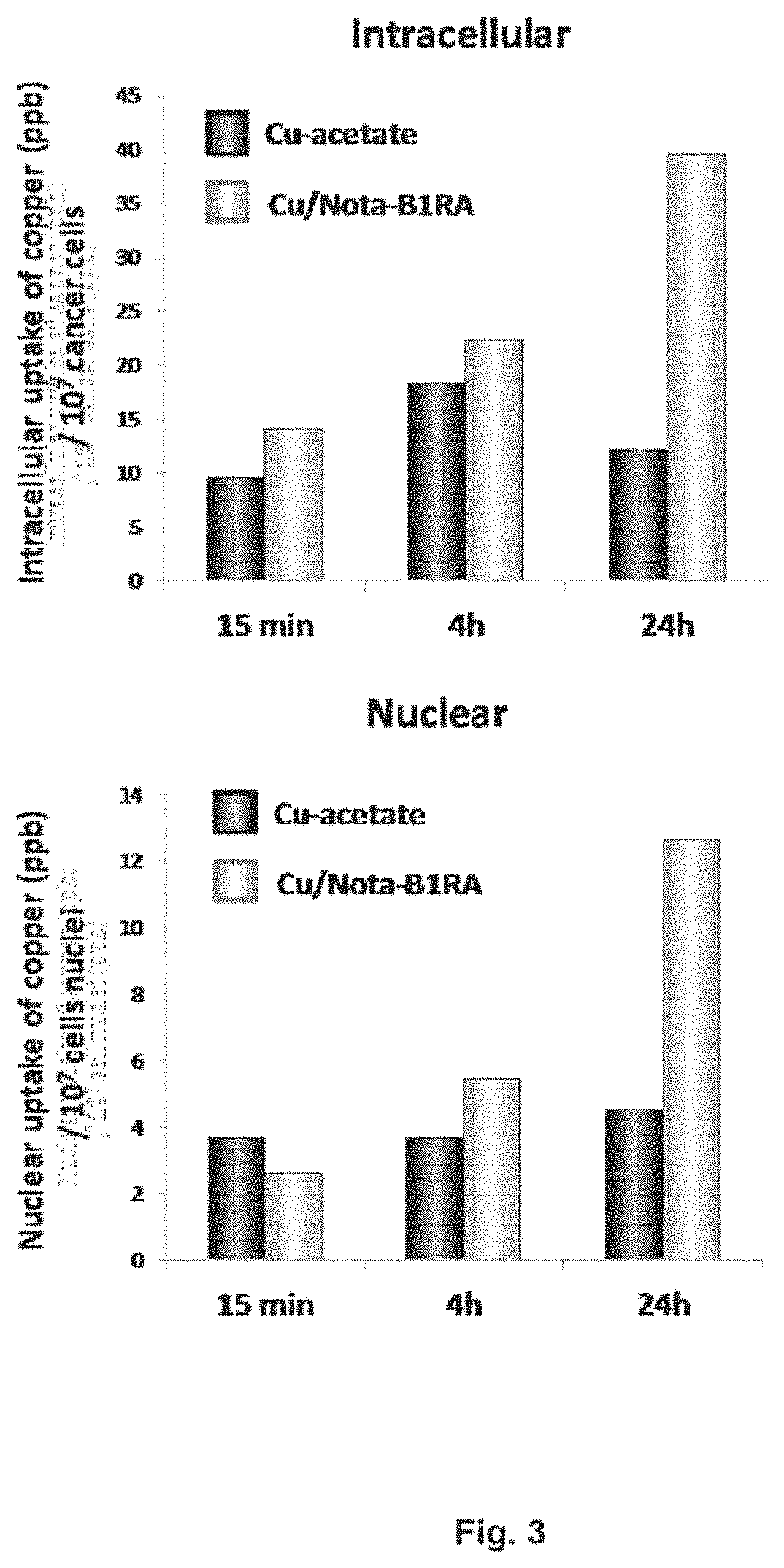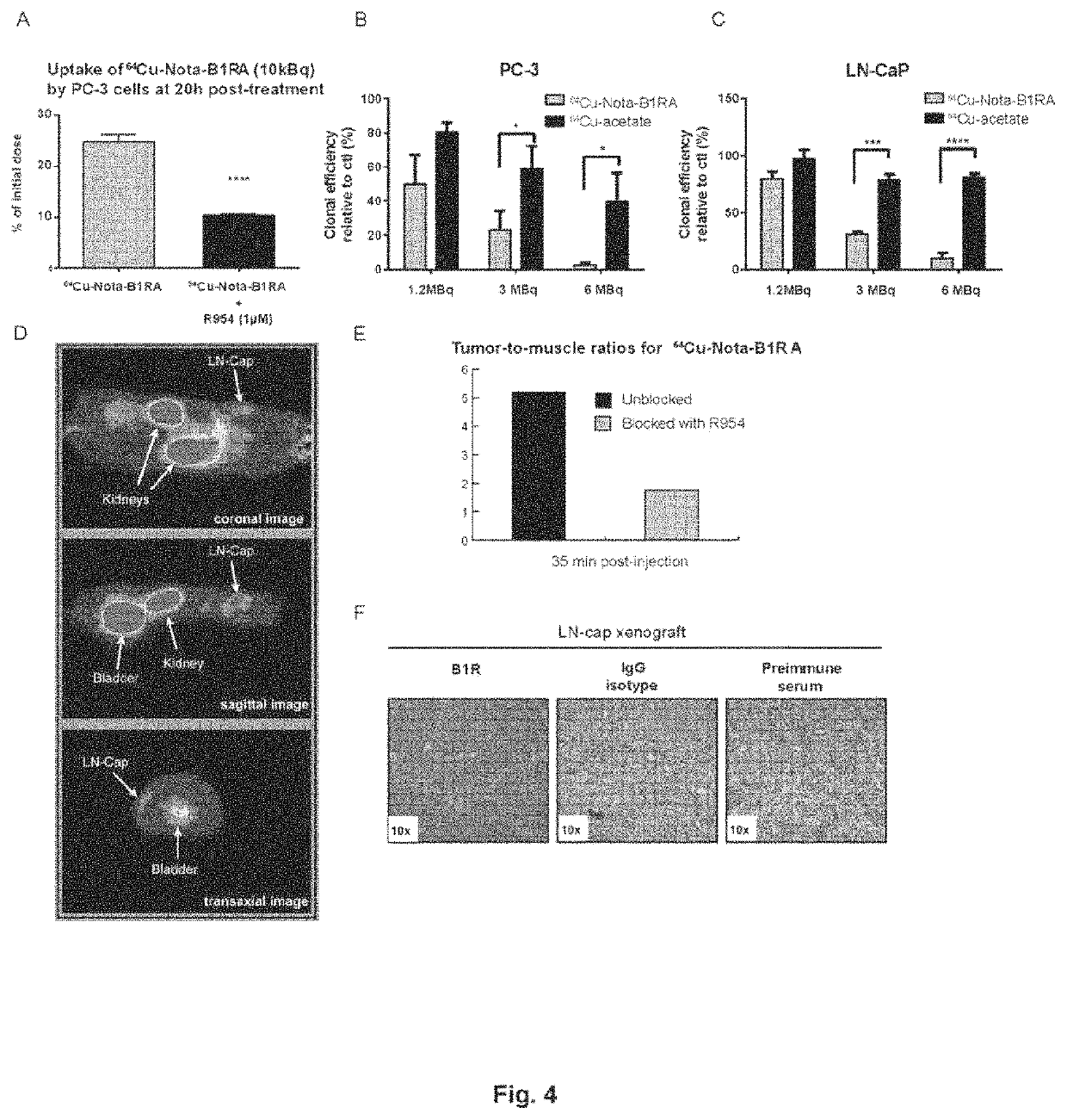Kinin-based theranostic probes for solid cancers and uses thereof
a solid cancer and theranostic probe technology, applied in the field oftheranostic compounds, can solve the problems of high background signal, inability to detect, and inability to eradicate scattered hypoxic microscopic tumor foci,
- Summary
- Abstract
- Description
- Claims
- Application Information
AI Technical Summary
Benefits of technology
Problems solved by technology
Method used
Image
Examples
example i
Peptide Synthesis and Radiolabeling
[0068]The peptide synthesis was performed as an example on an automated system using Tentagel S RAM resin. The resin was first loaded in the reaction column of the automatic peptide synthesizer (Pioneer Peptide Synthesis system, Applied Biosystems, Foster City, Calif.), and Fmoc amino acids were added in a 3-fold excess using HATU in the presence of DI PEA. A deprotection step was performed using 20% piperidine in DMF. The NOTA chelate unit was synthetized as an example using the procedure described by Guerin et al. (2010, Org Lett, 12: 280-283). The N-terminal Fmoc was cleaved from the peptidyl resin using 20% piperidine for 30 min, followed by successive washing with DMF 2×, DCM 3×, IPA, DCM, IPA, DCM, IPA and DCM 3×. The resin was then treated with bromoacetic anhydride 2.5 fold equivalent (preformed in DCM with DIC (2.5 eq) and bromoacetic acid (5 eq), 15 min) for 30 min and then was wash as before. The resin was then suspended in DCM and 5-fol...
example ii
In Vitro and In Vivo Assays
[0070]The apparent affinity constants (or potency) of kinin agonist and antagonist analogues for human B1R were estimated by in vitro human bioassay using isolated human umbilical veins (Gobeil et al., 1996, supra; Côté et al., 2009, supra). This tissue proved to be a valuable, natural and highly sensitive bioassay for determination of potency and selectivity of natural and synthetic kinin receptor ligands. It particularly expresses both kinin B1R and B2R at physiological densities. Apparent affinities of peptides were defined in terms of EC50 (pD2) values for agonists and IC50 values for antagonists.
[0071]In vitro plasma stability of peptides was performed according to a previously published procedures (Fournier et al., 2012, Bioconjug Chem, 23:1687-1693). Briefly, an aliquot (20 μL) of the purified radiolabeled B1R peptides was mixed with 900 μL normal rat, mouse and human plasma. The mixture was incubated at 37° C. water bath for different periods of ti...
example iii
In Vivo Imaging
[0078]PET scans were performed using a LabPET8 (Gamma Medica Inc.) small animal scanner with an axial field of view of 8 cm. F98 GBM bearing rats were injected with 74 MBq (2 mCi; 100 μL) of novel 64Cu radiolabeled B1R peptides (agonist or antagonist) with via the caudal vein under isoflurane anesthesia. PET scans were assessed 1 h and 20 h post-injections. Each animal had a 20 minutes scan after compound injection. The images were reconstructed by a three dimensional MLEM algorithm implementing an analytically derived system matrix (Selivanov et al., 2000, Nuclear Science, IEEE Transactions on, 47: 1168-1175). Regions of interest were traced for tumor, normal brain, heart, liver, kidney, and muscle, and the activity in each organ was measured and reported to the injected dose for percentages calculation. The specificity of each radiotracer for its target was demonstrated following pre-administration of excess unlabeled analogue as well as with stable B1R knock-downs ...
PUM
| Property | Measurement | Unit |
|---|---|---|
| pH | aaaaa | aaaaa |
| pH | aaaaa | aaaaa |
| theranostic composition | aaaaa | aaaaa |
Abstract
Description
Claims
Application Information
 Login to View More
Login to View More - R&D
- Intellectual Property
- Life Sciences
- Materials
- Tech Scout
- Unparalleled Data Quality
- Higher Quality Content
- 60% Fewer Hallucinations
Browse by: Latest US Patents, China's latest patents, Technical Efficacy Thesaurus, Application Domain, Technology Topic, Popular Technical Reports.
© 2025 PatSnap. All rights reserved.Legal|Privacy policy|Modern Slavery Act Transparency Statement|Sitemap|About US| Contact US: help@patsnap.com



